The tendril is a common and popular pattern element of Schwalm whitework. Often very distinctive examples are used.
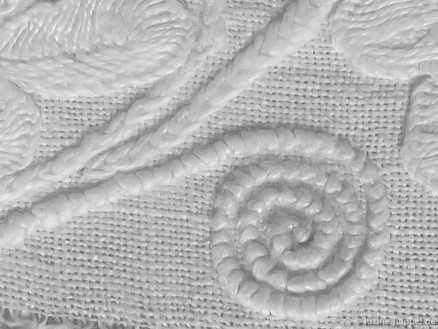 To be able to stitch tendrils neatly and orderly, an exact pattern is needed. The line drawing below has an original size of approximately 2 cm X 2 cm.
To be able to stitch tendrils neatly and orderly, an exact pattern is needed. The line drawing below has an original size of approximately 2 cm X 2 cm.
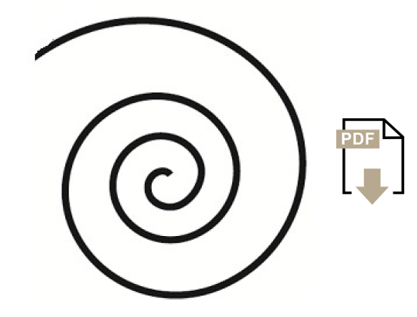
Ideally, the exact line is transferred to the linen.
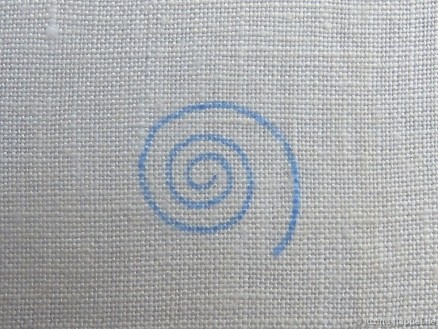 The stitching of tendrils always begins at the straight end and progresses inward along the curved line to the center. Tendrils should never be worked with too fine a thread. Depending on the thread count of the linen, coton à broder No. 16 or No. 20 would be ideal.
The stitching of tendrils always begins at the straight end and progresses inward along the curved line to the center. Tendrils should never be worked with too fine a thread. Depending on the thread count of the linen, coton à broder No. 16 or No. 20 would be ideal.
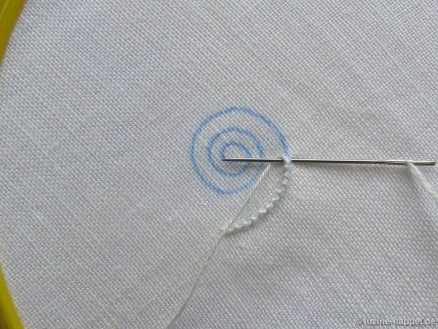 While working the Coral Knot stitches, always rotate the piece stitch-by-stitch
While working the Coral Knot stitches, always rotate the piece stitch-by-stitch
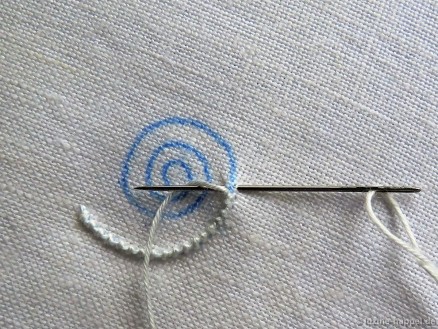 so that the needle is always perpendicular to the tendril line. This helps the embroiderer to follow the curve exactly.
so that the needle is always perpendicular to the tendril line. This helps the embroiderer to follow the curve exactly.
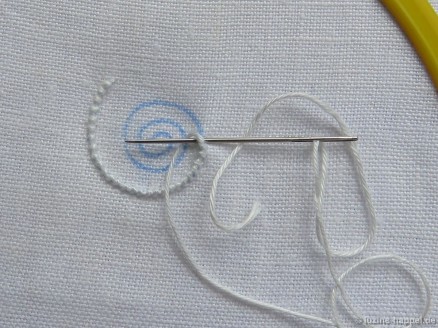 If the thread gets short – which can happen when working large tendrils – take the needle to the back directly after the last knot,
If the thread gets short – which can happen when working large tendrils – take the needle to the back directly after the last knot,
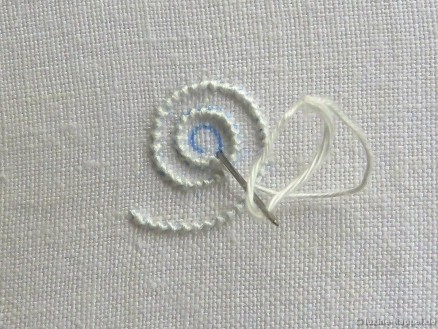 and secure the thread in the back of some stitches. Fasten the new thread in the same way.
and secure the thread in the back of some stitches. Fasten the new thread in the same way.
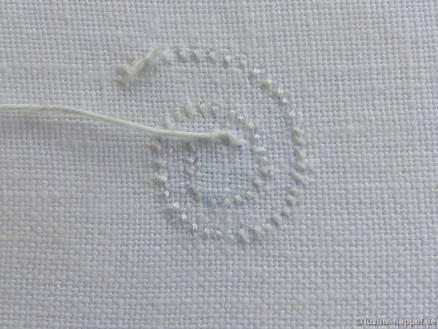 Bring the needle up – a tiny step back – directly near, or better yet through, the just ended thread. In this way, the transition is nearly invisible.
Bring the needle up – a tiny step back – directly near, or better yet through, the just ended thread. In this way, the transition is nearly invisible.
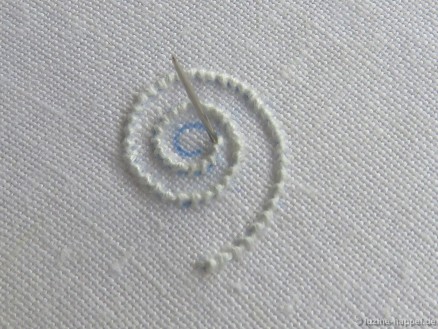 Do not end the Coral Knot stitches at the center in a straight line. After the very last Coral Knot stitch, take the needle to the back with a small inward stitch.
Do not end the Coral Knot stitches at the center in a straight line. After the very last Coral Knot stitch, take the needle to the back with a small inward stitch.
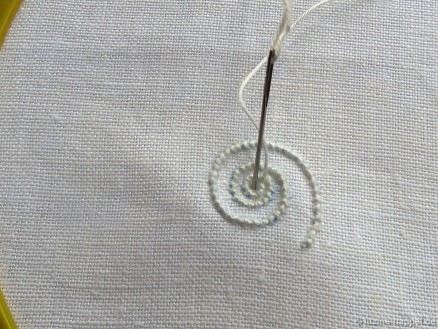 This makes a nice tight curl in the center of the tendril.
This makes a nice tight curl in the center of the tendril.
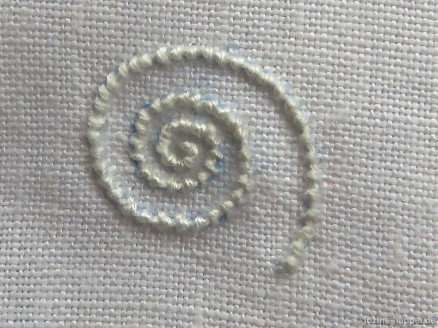 Even unwashed and unironed the tendril looks well done!
Even unwashed and unironed the tendril looks well done!
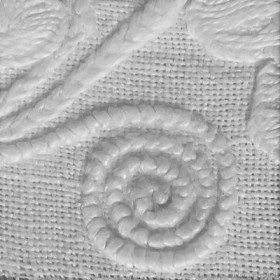


Hallo was haben sie da für einen Stich verwendet bitte, bzw. wie geht der haben sie dazu ein buch? Liebe Grüße Sophie
Der Stich heißt “Knötchenstich”, auch unter den Bezeichnungen “Korallenstich” oder “Perlenknötchen” zu finden. Der Knötchenstich ist einer der wichtigetsen Stiche der Schwälmer Weißstickerei. Sehr detaillierte Arbeitsanleitungen finden Sie in meinen Büchern Lektion #4 und Grundlagen der Schwälmer Weißstickerei.